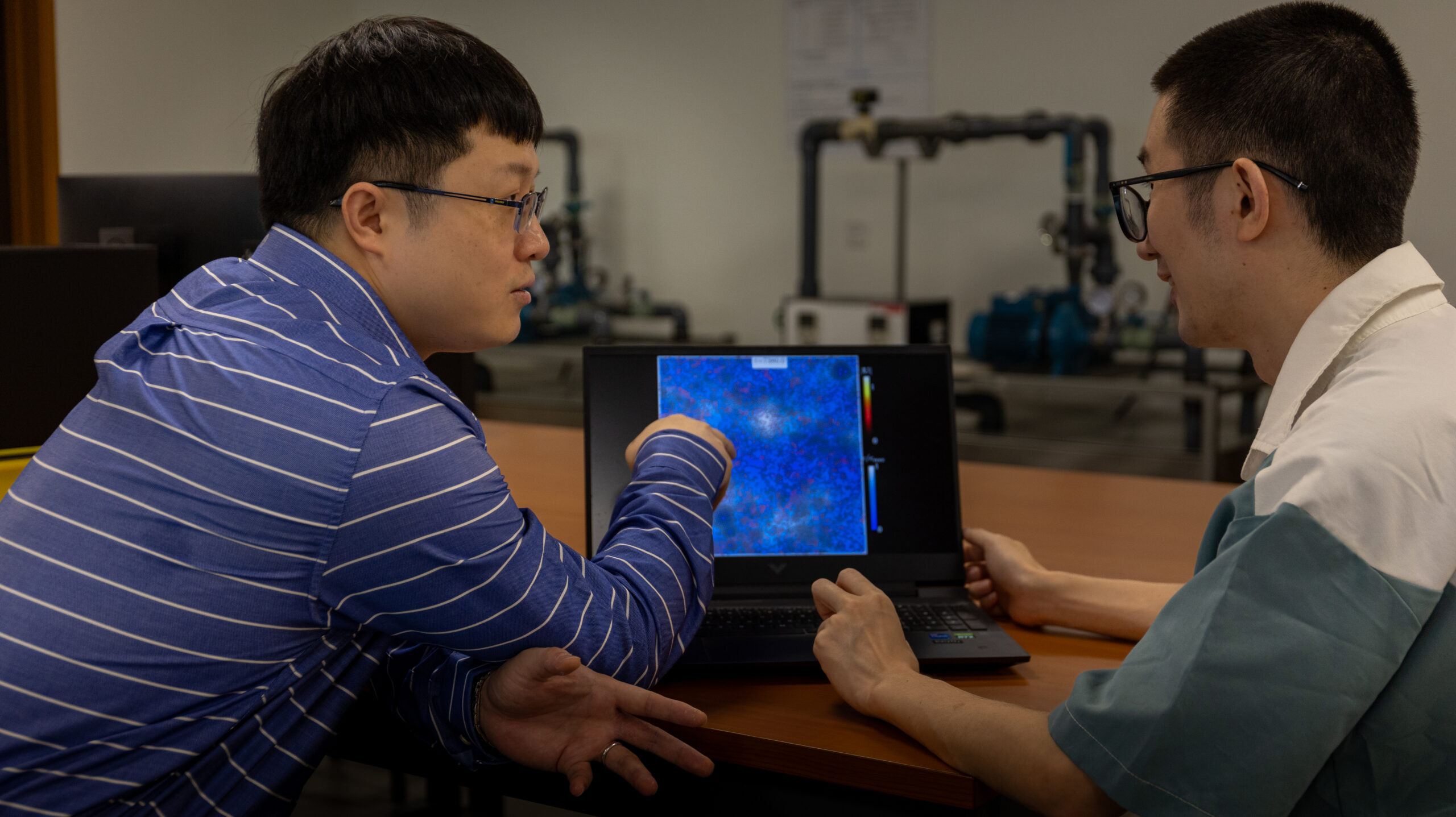
Imagine a world where materials could reshape themselves, tiny machines could navigate on their own, and structures could adapt to their environment. In this realm of so-called ‘active matter’, minuscule, self-moving entities such as bacteria, microtubules, and tissue cells come together to create fascinating patterns and movements.
In a recent study, researchers at CDE led by Assistant Professor Zhu Lailai (Mechanical Engineering) have explored the behaviour of active matter, shedding new light on how these tiny agents transition between different states – solid, liquid, and gas – and even alter the flow pattern of fluids. Their findings could offer new insights into designing futuristic materials that can transform at will.
“Active matter is composed of small, self-moving units that convert biological energy into mechanical motion,” said Asst Prof Zhu. “Think of it as a microscopic dance where these entities interact, creating dynamic patterns and behaviours. In recent years there has been growing interest among scientists in studying these phenomena, aiming to understand the underlying principles and apply them to create innovative materials and devices.”
In their latest research, published as a featured article in the journal Nature Communications, Asst Prof Zhu focused on a specific type of active matter made up of tiny droplets that can move on their own as a result of a specific chemical reaction. Using powerful computer simulations, they explored how these droplets behave and found they undergo transitions similar to how ordinary matter changes from solid to liquid to gas when heated, a phenomenon known as phase transition.
At lower activity levels, these droplets organise themselves into a flat, honeycomb pattern resembling a solid structure. But as their activity increases, they break free, resembling the movement of molecules in a liquid. Keep ramping up the activity, and they behave like gas molecules, completely unrestrained.
Video animation: As chemical activity increases, the active droplets transform through three stages: (1) they first become a solid that resembles a honeycomb structure; then (2) turn into a liquid that appears to pulse or breathe, and (3) finally change into a gas with mushroom-like chains.
Moreover, when these active droplets gather more closely together, they begin to display some unexpected behaviors. Normally, we expect fluids to move in a smooth and predictable pattern, known as laminar flow. However, as the chemical activity within these droplets increases, their movement becomes erratic and swirling, transforming into what is known as turbulent flow. This is surprising because, traditionally, turbulence is thought to occur only in much larger or faster flows. Yet, these active droplets, despite their small size and speed, seem to defy this rule.
“This ability to control both phase changes and fluid flow transitions simply by adjusting activity levels marks a significant advancement in our understanding of active matter,” said Asst Prof Zhu.
The researchers say these newfound transitions not only deepen our understanding of active matter but also highlight the parallels between these living materials and traditional matter. By deciphering the complex interactions among active particles, they hope to pave the way for designing inanimate material systems with lifelike adaptability and functionality.
"Our research will shed light on the creation of materials that can change shape and machines that can move on their own, similar to how biological cells do," said Asst Prof Zhu. “All thanks to the captivating behaviour of active matter.”
Alongside Asst Prof Zhu Lailai, the research team included PhD student Qianhong Yang and former research fellow Dr Maoqiang Jiang (now an associate professor at Wuhan University of Technology) who both performed the simulations. Dr Francesco Picano at University of Padova, helped the team identify the similarity between the active turbulence and the canonical hydrodynamic turbulence. Qianhong is supported by research scholarships from NUS and the China Scholarship Council and the research was supported by a Singapore Ministry of Education Academic Research Fund Tier 1 grant.





